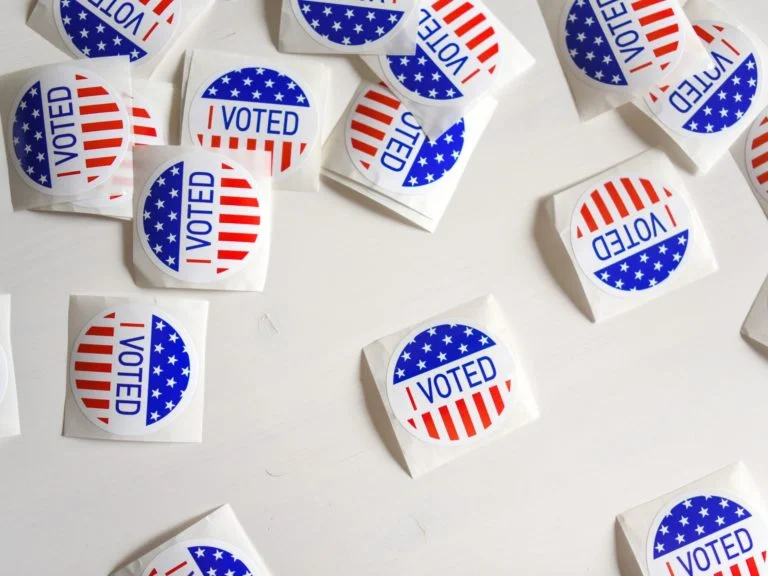The U.S. Hispanic consumer audience is a fast growing and thriving pulse of American culture, boasting 63.6 million consumers with over $1.7 trillion in buying power. But despite this consumer segment’s size and influence, this audience is often underserved by marketers that fail to create campaigns that truly resonate—or fail to specifically target this audience at all.
So the challenge remains: How can brands effectively target the Hispanic audience in the U.S.? The digital media landscape is ever-evolving, and even more now with changes in capabilities, restrictions, and user privacy.
That’s where out-of-home media comes in.

What is Hispanic out-of-home media?
At Refuel Agency, we’ve cultivated long-term relationships to guarantee effective campaigns with local and hyper-local penetration among local communities and multicultural consumers. In general, out-of-home media is advertising that’s experienced outside of the home—which can include billboards, wallscapes, and posters seen while “on the go”.
Our Hispanic out-of-home media offerings increase brand awareness to diverse consumers with high-impact media in multicultural communities, including salons, daycares, c-stores, lunch trucks, bus shelters and subways.
Read next: 3 Examples of Hispanic Marketing Campaigns That Hit the Mark
1. Understand your audience.
As mentioned above, there are 63.6 million Hispanic consumers in the U.S., and this population is projected to compose 30% of the United States’ population by 2050. But who, exactly, is the Hispanic consumer?
The first thing to understand about the Latino market is the difference between the terms “Hispanic” and “Latino”. At its simplest, the term “Hispanic” applies to language—it refers to anyone with Spanish-speaking origin, including Spain. And the term “Latino”, “Latina” or “Latinx” refers to anyone with Latin American heritage, including Brazil.
Second, Hispanic consumers often have strong cultural ties—but they’re not all the same. There are over 22 countries in which Spanish is primarily spoken, and according to Pew Research Center, most Hispanics in the U.S. prefer to identify with their country of origin. Understanding the broad cultural nuances and differences within the umbrella of the Hispanic consumer audience is key to creating messages that resonate instead of alienate.
And third, the preferences and outlooks of Hispanic consumers can vary by generation. Older generations are more likely to consume and trust Spanish-only print, television and radio content. Younger generations, on the other hand, are more likely to bridge the gap between Latino culture and American culture. Young Hispanic consumers are more likely than their older counterparts to primarily consume English-speaking news and media.
Read next: A Look At The Future of Hispanic Marketing
2. Language matters. But culture matters more.
When it comes to Hispanic marketing, context, culture, and language are everything. Communication and messages are highly subjective and open to interpretation, and misunderstandings can happen easily (just take a look at any one of these cross-cultural communication fails).
That’s where local out-of-home and print media really solves problems. Because you’re able to hyper-target local audiences, you’re also able to craft highly specific and strategic messages to appeal to your target demographic. For example, you can create a custom message to run in local Spanish-speaking newspapers which over 3 of 5 Spanish speakers often read and trust as a news source. You’re able to effectively target Spanish-speaking audiences—in their own language and in a medium they consume often and trust.
However, while many brands assume that advertising to Hispanic audiences requires advertising in Spanish, our research found that the winning factor for advertisements targeting Hispanic audiences is not language, but rather, culture. According to Refuel’s Hispanic Explorer Series™ 2021, Hispanic audiences pay equal attention to ads in English and in Spanish—but they respond more to ads that reflect their culture. The takeaway? Your target audience wants to see themselves reflected in your advertisements—and isn’t that always the case? Make an impact with your Hispanic advertising campaigns by truly understanding and speaking to your target audience.
Read next: How to Reach the Hispanic Market on Social Media
3. Targeted, consistent advertising is key.
It must also be a natural fit for the advertiser. Coming into the community for a short campaign is not going to build the trust that’s needed and may reflect negatively on the brand or advertiser. It is important to connect on a local community level and support Spanish owned businesses. An easy way to start is to include media properties that are Hispanic owned and operated in the mix.
So, targeted advertising is key, especially with Hispanic audiences. Our research found Hispanic shopping habits are different from the general market. For instance, according to Refuel’s Hispanic Explorer Series 2021™, Hispanic consumers are 30% more likely to visit local grocery stores than the general population and twice as likely to visit local convenience stores. Over half of Hispanic consumers speak Spanish at home, and 56% are more likely to pay more attention to an ad that reflects their culture.
Read next: 6 Ways to Create Authentic and Engaging Hispanic Advertising Campaigns
Are you ready to create a multicultural marketing strategy that will drive brand awareness, sales, and brand loyalty? At Refuel Agency, we’ve been crafting strategic multicultural advertising campaigns for over 30 years, and we’re invested in ensuring your campaigns make an impact. Contact us today to get your custom multicultural marketing strategy.




